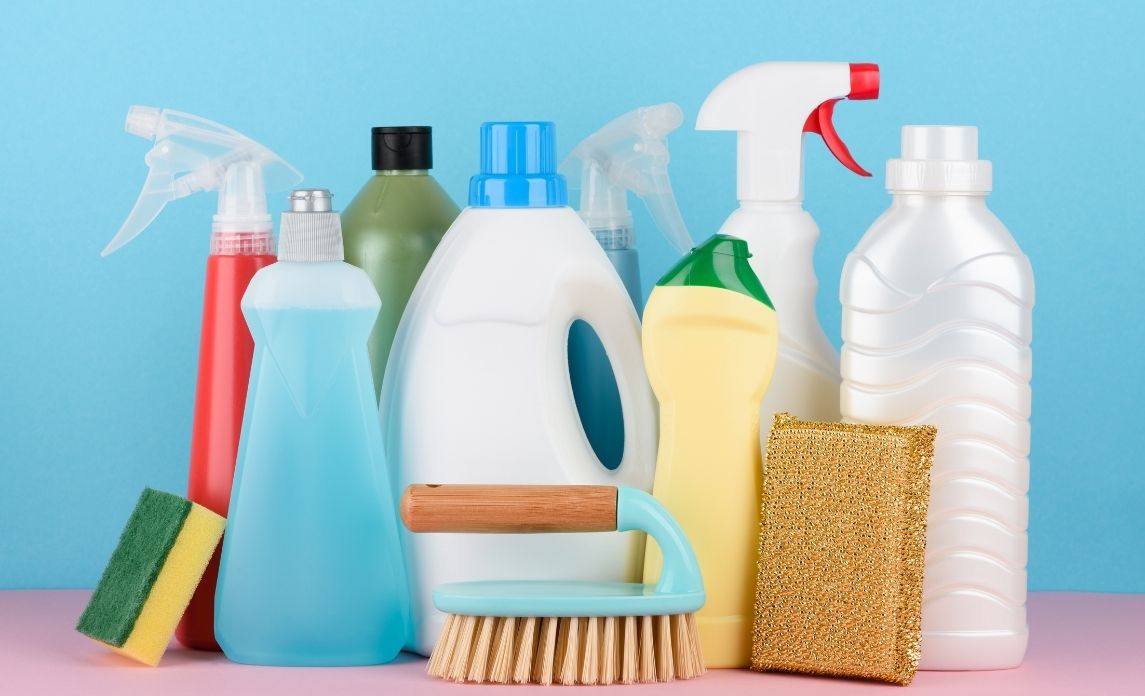In most cases, the word “bleach” is associated with laundry. Its main application is as both a stain and colour remover, through a process called bleaching.
Beyond its usefulness in washing clothes, bleach is also a broad spectrum bactericidal. All commercial cleaning companies, for example, will use different concentrations of bleach for sanitisation and disinfection.
Do note that there are different kinds of bleach, each more suited for certain purposes than the other. Here are 3 common types of bleach and their best recommended usage:
Chlorine Bleach
Arguably the most popular kind of bleach, chlorine bleach has an active ingredient called sodium hypochlorite. It’s a very powerful bactericide and disinfectant, which is why almost all formulations of chlorine bleach are diluted in water.
In domestic settings, chlorine bleach is often used to remove stains on fabrics. However, due to the strength of chlorine bleach, it’s not ideal for use in coloured or patterned clothing. On the other hand, it’s perfect for brightening white clothes.
Do note that extra care must be taken when using chlorine bleach for laundry, as prolonged or repeated exposure can cause the fabric to thin. Even less concentrated preparations can still degrade the fabric over time, so make sure to follow usage instructions to the letter.
Another important application of chlorine bleach is for disinfection. It’s a crucial product for maintaining high standards of cleanliness, particularly for hospitals and clinics. Depending on the concentration of sodium hypochlorite, chlorine bleach can also be used in swimming pools.
There are also other active ingredients used in various kinds of chlorine bleach, aside from sodium hypochlorite. These include:
- Chlorine gas
- Chlorine dioxide
- Calcium hypochlorite mixed with calcium hydroxide and calcium chloride
The latter combination is often found in bleaching powder and bleaching tablets. Meanwhile other formulations include halazone, monochloramine, and sodium dichloroisocyanurate.
Oxygen Bleach
After chlorine bleach, the next most common type of bleach for commercial usage is oxygen bleach. It’s also called non-chlorine bleach, with the active ingredient being sodium percarbonate.
This composition makes oxygen bleach safer for more kinds of fabrics. In fact, its other common names include colour-safe bleach and all-fabric bleach. If you want to disinfect your clothes without much fear of fading or thinning, oxygen bleach is the best option.
Another advantage of using oxygen bleach is that it’s more eco-friendly. When dissolved in water and chemical reactions happen, the only byproduct is the nontoxic substance called soda ash.
Other product types of oxygen bleach include:
- Benzoyl peroxide, sometimes used for acne treatment
- Potassium persulfate, often found in hair bleach
- Sodium percarbonate, which is also used as a degreaser
- Sodium perborate
- Peracetic (peroxyacetic) acid, also used for agricultural disinfection
- Ozone
- Permanganate salts
Reducing Bleach
There is also another kind of bleach called reducing bleach or reductive bleach. This is often used in bleaching a variety of materials, including wood pulp, textiles like cotton or wool, as well as leather, and even clay.
Then, these materials are made or processed into new materials. For example, after wood pulp is bleached, it can then be used to make paper.
The most popular active ingredient or bleaching agent in reducing bleaches is sodium dithionite or sodium hydrosulfite.
How Does Bleach Work
The way all kinds of bleach works is essentially the same: the active ingredient reacts with other compounds and deactivates them. In the case of fabrics, for example, the chlorine in the bleach will react with the fabric’s pigments to render them colourless.
When it comes to the disinfecting properties of bleach, the process is similar. As soon as the active ingredient—in most cases, this is sodium hypochlorite—comes into contact with microorganisms, it oxidises their cells and makes them unable to function. In some circumstances, the oxidation process can kill microorganisms outright.
Do note that non-chlorine bleaches can also be used as disinfectants, as long as the active ingredient is an oxidising agent. However, they may not be as potent as chlorine bleach.
How to Use Bleach Safely and Effectively
The most effective way to use bleach and maximise its disinfecting properties is to clean or wash the object or surface first. For surfaces in particular, remove as much debris as you can by sweeping, wiping, and/or mopping.
For washing, use the suitable type of detergent and temperature of water. Make sure to rinse thoroughly and let dry completely before you apply the bleach. Follow the usage instructions on the label to get the best results.
Finally, here are some safety tips to follow when using bleach:
- Wear protective gear like gloves and safety goggles.
- Wear a mask or respirator to prevent the inhalation of harmful vapours.
- When using bleach indoors, open windows and doors to let air circulate and prevent concentration of fumes.
- Don’t mix any other kind of cleaner with bleach.
When it comes to cleaning and disinfecting, one of the most important products you’re going to use is bleach. That’s why it’s important to know more about bleach, so that you can use it properly and achieve the level of cleanliness you wish to achieve.


